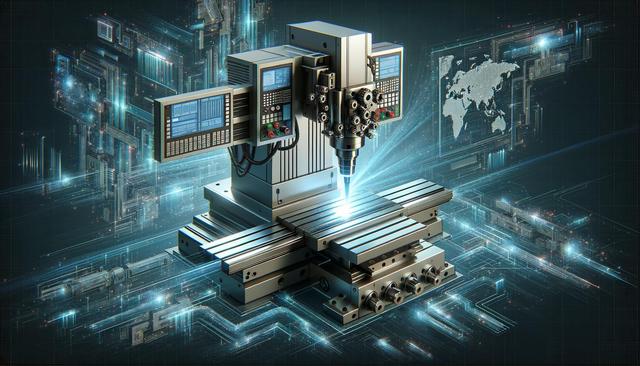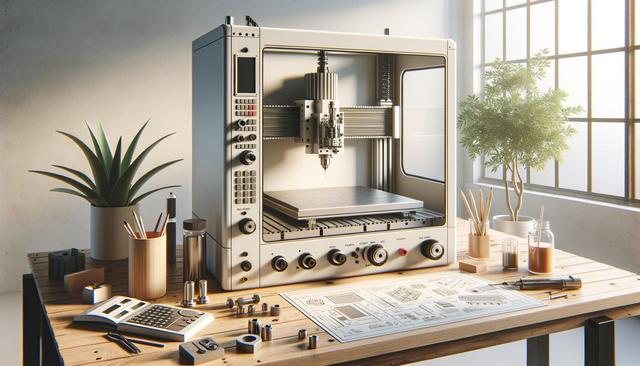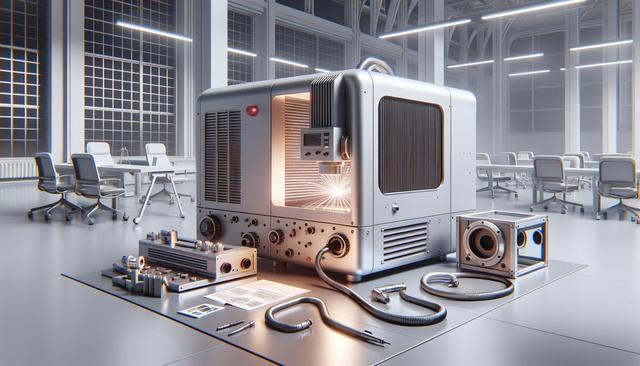What Influences CNC Milling Machine Prices?
CNC milling machines vary widely in price, and understanding the key factors that influence cost can help you evaluate your options more effectively. The most significant factors include machine size, build quality, precision, and the level of automation. For instance, compact desktop models tend to be more affordable due to their smaller footprint and limited capabilities, while industrial-grade machines designed for large-scale manufacturing often come with a higher price tag.
Material capabilities also affect the cost. Machines that can handle tougher materials such as stainless steel or titanium typically require more robust components, which increases their price. Additionally, machines with advanced features like automatic tool changers, enhanced cooling systems, and integrated CAD/CAM software tend to cost more. It’s important to determine which features are essential for your operations and which ones are optional.
Here are some common price ranges you might encounter:
- Entry-level desktop CNC mills: $2,000 – $5,000
- Mid-range models for small businesses: $5,000 – $20,000
- Industrial-grade machines: $20,000 – $100,000+
Types of CNC Milling Machines to Consider
When comparing CNC milling machines, it’s helpful to understand the different types available. Each type serves specific functions, and the right choice depends on your production needs. The most common types include vertical milling machines, horizontal milling machines, and gantry milling machines. Vertical mills are generally more compact and easier to operate, making them suitable for small workshops and prototyping.
Horizontal mills, on the other hand, are ideal for heavy-duty tasks and are often used in high-volume production settings. Gantry mills are known for their ability to handle large workpieces and are typically used in aerospace and automotive industries. Each type comes with its own set of features, and their prices vary accordingly. Knowing the strengths and limitations of each type can help you choose a machine that offers the best value for your needs.
In addition to these, there are 5-axis CNC milling machines, which offer greater flexibility and precision for complex geometries. These machines are more expensive but are often worth the investment for applications requiring intricate detailing.
Features That Add Value and Cost
Modern CNC milling machines often come equipped with a range of features that can significantly enhance productivity and precision. While these features add to the overall cost, they can also provide long-term value by reducing labor, minimizing errors, and speeding up production. Common value-adding features include:
- Automatic tool changers (ATC)
- High-speed spindles
- Enclosed work areas for improved safety and cleanliness
- Integrated coolant systems
- Advanced control panels with touchscreen interfaces
Some machines also come with smart sensors and IoT connectivity, allowing real-time monitoring and predictive maintenance. Although these technological enhancements increase the initial investment, they can reduce downtime and extend the machine’s lifespan.
It’s important to assess whether these features align with your operational goals. For example, if you’re running a low-volume operation, a basic model without automated features might be more cost-effective. However, for high-volume or precision-critical applications, investing in a machine with advanced capabilities can improve efficiency and quality.
New vs. Used CNC Milling Machines
Another key decision point is whether to purchase a new or used CNC milling machine. New machines offer the latest technology, warranties, and customer support. They’re typically more reliable and require less immediate maintenance. However, they also come with a higher upfront cost, which may not be feasible for every budget.
Used machines provide a more budget-friendly option and can still offer excellent performance if sourced from a reputable seller. When considering a used machine, it’s crucial to inspect its maintenance history, hours of operation, and any signs of wear and tear. Buying from a certified reseller or a company that offers refurbishment services can reduce the risks associated with used equipment.
Pros of new machines:
- Latest technology
- Warranty and support
- Higher reliability
Pros of used machines:
- Lower upfront cost
- Potential for high value if well-maintained
- Faster availability
Making the Right Investment
Choosing the right CNC milling machine involves balancing cost, features, and long-term value. Start by identifying your production goals, the types of materials you will work with, and the precision levels required. From there, consider whether a basic or feature-rich model will serve you better in the long run.
It’s also wise to factor in the total cost of ownership, including maintenance, tooling, training, and potential upgrades. Financing options and service agreements can also influence your decision, so be sure to explore what’s available through different vendors. Taking the time to research and compare options will help you avoid overspending or ending up with a machine that doesn’t meet your needs.
Ultimately, a well-informed investment in a CNC milling machine can enhance your manufacturing capabilities and provide a solid return over time. Whether you’re a hobbyist, a small business, or part of a larger industrial setup, understanding the market and your specific requirements is the key to making a smart purchase.
Conclusion: Navigating CNC Milling Machine Choices
Exploring CNC milling machine prices and options allows you to make confident, informed decisions tailored to your unique needs. By understanding the different machine types, essential features, and the pros and cons of new versus used equipment, you can find a solution that supports your goals efficiently and cost-effectively. Whether you’re scaling a business or starting a new venture, taking a strategic approach will help you invest wisely in the right CNC milling solution.


